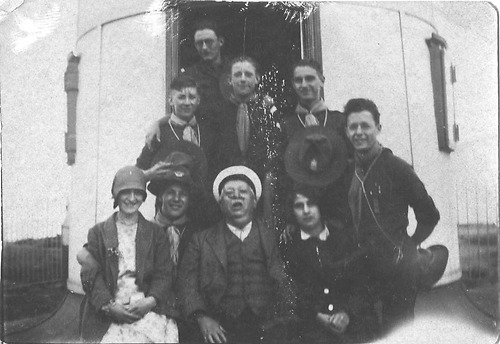 Hartlepool Sports & Leisure
Hartlepool Sports & Leisure
- Cinemas, Theatres & Dance Halls
- Musicians & Bands
- At the Seaside
- Parks & Gardens
- Caravans & Camping
- Sport
 Hartlepool Transport
Hartlepool Transport
- Airfields & Aircraft
- Railways
- Buses & Commercial Vehicles
- Cars & Motorbikes
- The Ferry
- Horse drawn vehicles
 A Potted History Of Hartlepool
A Potted History Of Hartlepool
- Unidentified images
- Sources of information
- Archaeology & Ancient History
- Local Government
- Printed Notices & Papers
- Aerial Photographs
- Events, Visitors & VIPs
 Hartlepool Trade & Industry
Hartlepool Trade & Industry
- Trade Fairs
- Local businesses
- Iron & Steel
- Shops & Shopping
- Fishing industry
- Farming & Rural Landscape
- Pubs, Clubs & Hotels
 Hartlepool Health & Education
Hartlepool Health & Education
- Schools & Colleges
- Hospitals & Workhouses
- Public Health & Utilities
- Ambulance Service
- Police Services
- Fire Services
 Hartlepool People
Hartlepool People
 Hartlepool Places
Hartlepool Places
 Hartlepool at War
Hartlepool at War
 Hartlepool Ships & Shipping
Hartlepool Ships & Shipping

Scouts on visit to Lighthouse
What we know about this image :
Picture depicting boy scouts visiting the Lighthouse in Hartlepool. Lighthouse keeper in the centre of the picture.
Donor : John Dee
Location
Related items :
 Heugh Lighthouse
Heugh Lighthouse
The Original Lighthouse
The Heugh Lighthouse was built by Stephen Robinson, a highly regarded local civil engineer, who also designed its optical apparatus. The foundation stone was laid on August 12th, 1846, and the lighthouse was opened on October 1st, 1847, having cost the Commissioners of the Pier and Port of Hartlepool £5,750 to erect.
It was built in white sandstone, tapering from a base 24 feet in diameter, to a diameter of of 16 feet below the projecting balcony surrounding the lantern. The tower stood 58 feet high, nearly 85 feet above the high-water mark, enabling the light to be seen from a considerable distance.
There were two lights; the main light, a stationary white light (later arranged as an occulting light, dimming for one second every five seconds), and a secondary, red, tidal light, housed on a small balcony affixed to the eastern side of the tower below the main balcony. The tidal light was shown from half-flood until half-ebb and could only be seen from a distance of 4 miles. During the day, a large red ball was hoisted to the head of a mast above the lantern as a signal that ships might enter the harbour.
Both lights were illuminated by gas and were equipped with patent burners supplied and fitted by McNeill & Co. of St. Martins Lane, London. Gas was supplied by the local works of the Hartlepool Gas and Water Company, but the lighthouse was also equipped with a gas holder of its own, capable of holding up to a week’s supply in case of emergency. An oil lamp was also kept in reserve in case of breakdown.
The Temporary Light
During the First World War Hartlepool was heavily bombed by German warships, so the War Office decided to move the lighthouse, to allow the defending guns of the Hartlepool Battery a clearer line of sight. The first Heugh Lighthouse was demolished in 1915, and was replaced by a temporary light on the Town Moor.
The New Lighthouse
The temporary lighthouse was finally replaced by a new lighthouse in 1926-7. It was built near to the site of the original lighthouse, but was carefully designed to be easily taken down in an emergency – just in case the guns on the Battery were needed again!
The new lighthouse was made from white-painted cast iron, and stood 42ft high to the top of it’s dome. It was powered by electricity, and it’s light was 61,000 candlepower. The lamp was lit and extinguished automatically with a spring switch, which had to be wound up every two weeks.
More detail »




